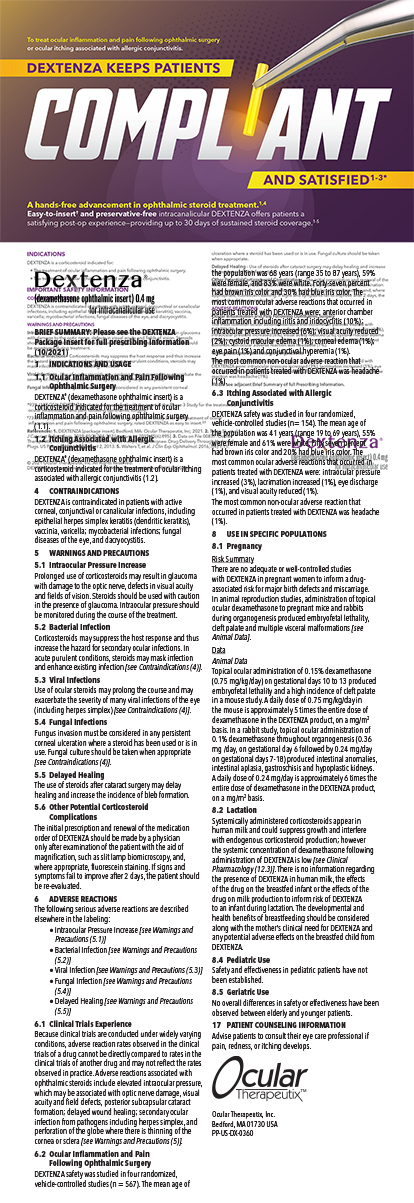A fair percentage of patients who underwent radial keratotomy (RK) will complain of hyperopic symptoms by the time they reach 35 to 40 years of age. Although some of these individuals have been +1.00D for many years, it is a gradual loss of accommodation that reduces their near and distance visual acuity and leads to complaints. In addition, because some patients lose latent accommodation faster than their lens shifts toward myopia, they will often experience a mild yet important net hyperopic shift in distance refraction when they are in their late 30s and early 40s.
What is the best method of treating hyperopia secondary to RK? I choose PRK.THERAPEUTIC OPTIONS
In order of complexity, the therapeutic options for treating post-RK hyperopia are pilocarpine drops, the Grene encircling suture, PRK and variants thereof, LASIK, IntraLASIK, a phakic IOL, and refractive lens exchange.
Pilocarpine is effective, but most patients will not use the agent long-term. Although the encircling suture devised by R. Bruce Grene, MD, of Wichita, Kansas, is effective for approximately 6 months, the approach is technically difficult, and its effect is unpredictable.
PRK and its variations are clearly the most predictable and safest option, as I will explain later. By contrast, LASIK risks corneal instability and irregular corneal astigmatism, and relifting the flap will produce “pizza-pie slices.” IntraLASIK presents the same challenges as LASIK in post-RK cases. The problem is not creating an excellent flap despite the presence of RK incisions, but rather it is the healing and relifting of the flap.
A phakic IOL is unnecessary for a problem that can be solved by less than 30 seconds of surface ablation. For hyperopia of +4.00D, however, a phakic IOL is a reasonable alternative, because PRK is less efficacious in the higher hyperopic ranges. Refractive lens exchange removes +1.50 to +2.00D of useful accommodation, and the complexity of this treatment for a +1.00D problem makes it excessive and unnecessary. Refractive lens exchange may be the best option, however, for a +4.00D consecutive hyperope who is presbyopic, especially if the surgeon uses a pseudoaccommodating IOL.
PRK and ITS variations Thoughts on DebridementFor years, I have been amazed by how reluctant refractive surgeons are to debride the corneal epithelium by hand. They would much rather use (1) a laser, even if the procedure takes longer, (2) a rotating brush, although it blocks their view, (3) 20% alcohol, even if it desiccates the anterior stroma and often produces variable results, or (4) a microkeratome-type device, although it cannot possibly do a better job than scraping down to Bowman's with a blade. I am sure that all these methods of epithelial removal can and do produce excellent results, but it seems to me that we surgeons collectively hunger to make a simple method more complex in hopes of implying higher-tech surgery.
Step by StepTo perform hyperopic PRK on a cornea with a history of RK, surgeons should first verify the astigmatic corneal meridia with a manual keratometer. Automated topography is notoriously inaccurate when reading a post-RK cornea, because the machine summates portions of the cornea instead of providing the most accurate astigmatic meridia over the visual axis. If the refraction and the manual keratometry are in agreement, disregard the information from the automated keratometer.
Next, surgeons should remove the epithelium by any means desired, but they should not attempt to remove the epithelium within the depth of the RK incisions. Third, surgeons should reduce the goal of the surgery by 30%. For example, a +1.50D distance refraction with a goal of emmetropia should be treated as +1.00D.
I still recommend constricting the pupil with 1% pilocarpine, because I believe that miosis allows for optimal centration of the ablation and offers even greater treatment accuracy than an eye tracker. No mitomycin C is necessary for treatments of less than +3.00D, but I recommend applying mitomycin C 0.02% for 2 minutes during all post-RK myopic PRK cases.
Postoperatively, patients should wear a soft contact lens for 4 days. They should use an antibiotic and steroid q6h while wearing the bandage contact lens and for an additional 2 days. Steroid drops are not necessary long-term.
CONCLUSIONBasically, my recommended treatment for hyperopia secondary to RK is PRK with a 30% reduction in the spherical component of the computer entry. My July 2003 column, “The Truth About PRK,” discusses the procedure in greater detail, and the article is available at http://www.crstody.com. PRK, in all its forms, is an indispensable tool for the comprehensive refractive surgeon, especially for the repair of previous corneal surgery.
Lee T. Nordan, MD, is a technology consultant for Vision Membrane Technologies, Inc., in Carlsbad, California. Dr. Nordan may be reached at (760) 431-1846; laserltn@aol.com.


